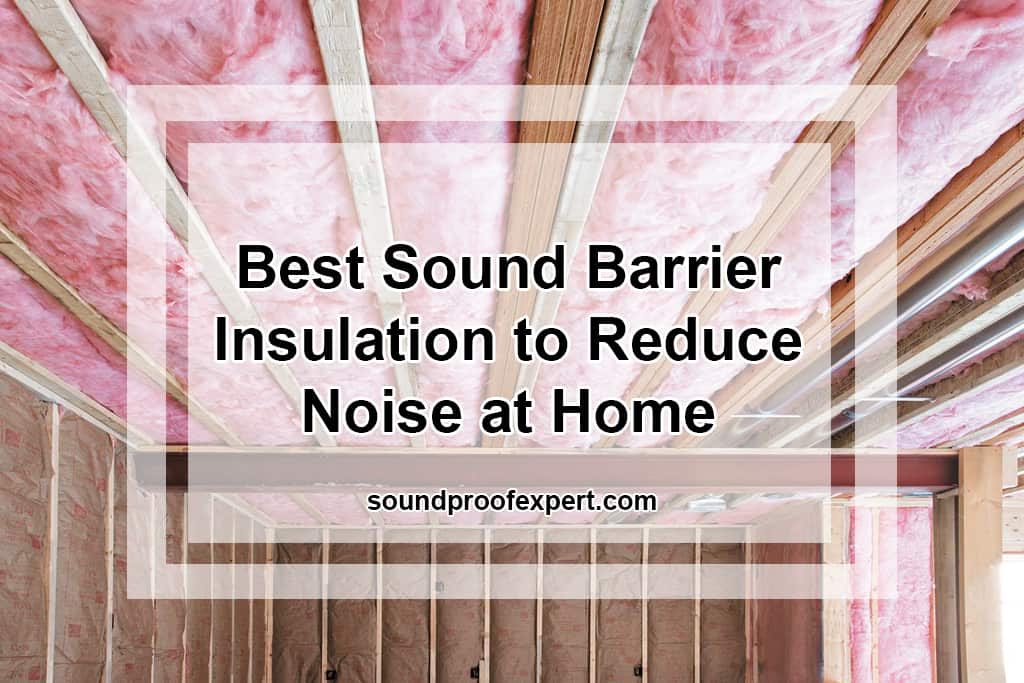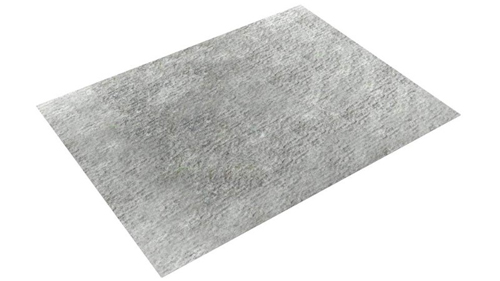
If noise within your home is keeping you up at night, you need to look into adding sound barrier insulation to your home. This insulation can be applied between the framework inside the drywall, as foam insulation pads on the exterior of the drywall, or as noise-reducing blankets for windows and doors. I will include all options below when listing the best sound barrier insulation for reducing noise at home.
Fiberglass Insulation
This is the insulation that is laid between the framing of the walls before you hang your drywall. Adding fiberglass insulation to the walls of your home will help keep more than just outside temperatures from seeping in; it will also keep outside noise from coming in, too.
Owens Corning® R-19 Fiberglass Insulation outranks all other fiberglass insulation because it is an effective thermal and acoustic barrier from the elements outside. The roll is 23 inches wide, 93 inches long, and 6 ¼-inch thick. One roll covers a little over 75 square feet of space.
Foam Panels
Foam panels are added to existing walls and allow sound to be absorbed or reflected. Foam panels are best used in office buildings, apartment complexes, or classrooms, where walls are joined and shared with other tenants. Additionally, foam panels can be used in the home if there is a room in the home, such as a basement or recording area that emits sound more than others.
Foam panels can be flat or sculpted. Flat panels are effective as long as they have the correct thickness needed for the application. Sculpted panels are shaped as ridges, egg crates, or pyramids, and will both absorb and reflect the sound being produced.
Acoustic Foam Panel 48” x 24” x 1” are flat 1-inch thick panels that barricade the sound in any room. All you need to apply these panels are a foam-safe adhesive. You will spray the adhesive on the panel and apply the panel to the wall. You can use as few or as many as you need for the room you are soundproofing.
Foamily Acoustic Foam Absorption Pyramid 48” x 24” x 2” are pyramid-sculpted foam panels that are 2 inches thick to absorb and reflect the sound produced within the area.
Wool Board
This was a new one for me, as I had never heard of it before, but now that I am familiar with it, it makes so much sense.
Wool board is a mineral wool board with a density of 2.5 pounds per cubic foot. Wool board is a great sound barrier insulator for reducing noise at home. Just like fiberglass insulation, you will add a wool board between the framing of a wall to hang between the drywall.
Roxul Acoustical Fire Batts Mineral Wool 2-inch (6) is flexible and absorbs sounds at a cost-effective price. This wool board is one of the most popular and effective. It comes in a pack of 6 boards measuring 24” x 48” and 2 inches thick.
Rubber Floor Mats and Floor Panels
Another effective sound barrier insulation for noise reduction in the home is through the use of floor mats and floor panels.
Floor mats are made of a dense, thick rubber for optimal sound barrier insulating. The rubber floor mats serve as an absorption mechanism for barricading sound from entering the area in which the mats are located.
Rubber floor mats are used on the floor to quieten the frequent noises that come from floors through walking and settlement pops. You will place the rubber floor mat on your floor and then cover the mat with a rug for optimal and attractive soundproofing effectiveness.
Mohawk Home Dual Surface Rug Pad
This floor mat is 8 x 10 and ¼-inch thick, making it a great density for sound barrier insulation in reducing noise within the home. You will need at least an 8 x 10 rug to cover the mat, and this rug will help with sound absorption, too. The rubber backing keeps the rug pad in place and allows the rug pad to fully absorb sounds. The fiber side is rough to grip the rug or covering that is placed on top of the mat.
Rug Pad USA Non-Slip Rug Pad
This floor mat rug pad by Rug Pad USA comes in a variety of thicknesses for you to choose from. The rubber and felt floor mat is slightly firmer and is recommended if you have a rug in a high traffic area of the home. You will want the rubber and felt to grip the rug and keep it in place.
What to Choose?
I know those are a lot of different materials to choose from for a lot of different applications, so here is an easy way to know which sound barrier insulation to choose for the right application.
Fiberglass or wool board insulation will want to be chosen when you have exposed framed walls where you can add the insulation directly into the framing of the walls. This insulation will want to be chosen if you are doing new construction, remodeling, or demolition.
Foam panels for sound barrier insulation will want to be chosen when you are adding sound barrier insulation to existing walls in a room. This can be a basement room, bedroom, living room, etc.
Rubber mats, floor mats, and rug pads will want to be chosen when you need to quieten the sounds that frequently come from the floor of a specific area of your home. You will want to add these rubber mats, floor mats, or rub pads directly over the area with the most frequent noise. Once you have added the rubber mat, floor mat, or rug pad to your floor, simply cover the mat with a rug or other floor covering to add an additional sound-absorbing element, as well as enhance the look of the room.






